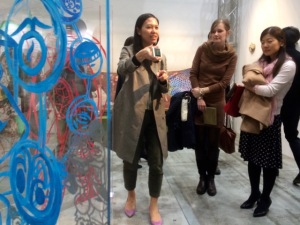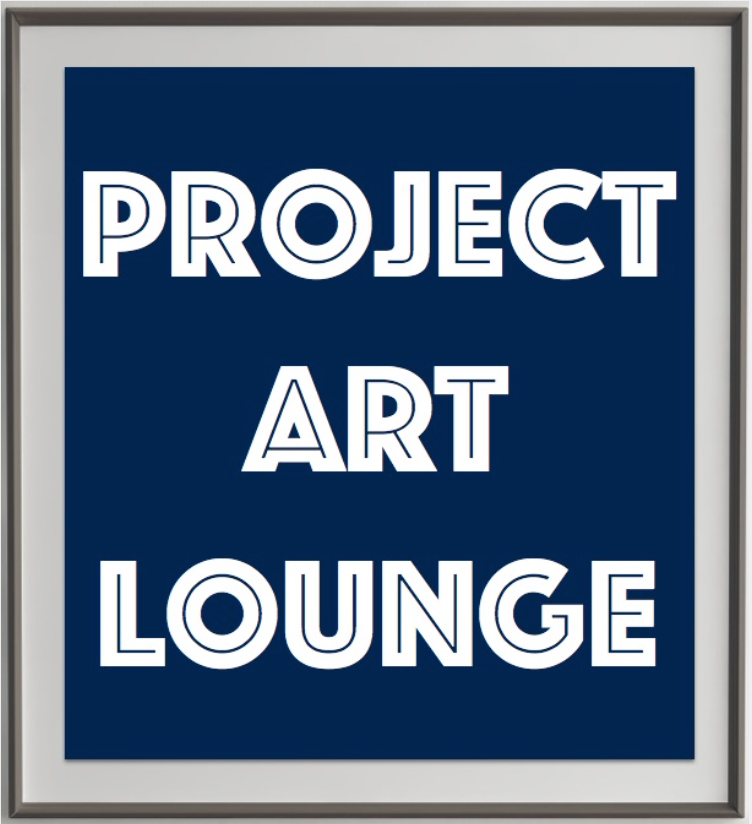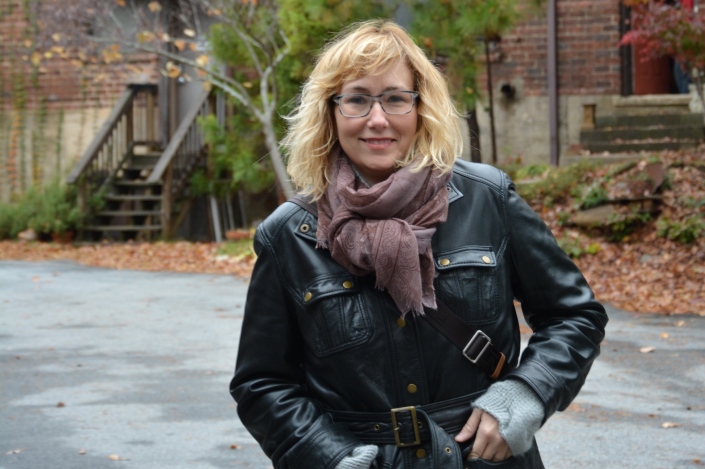Review
Untitled (Miami V.I.P. or Miami Vice?)

There was a mood of introspection at this year’s art week in Miami. Was it a pending sign of the times or a somber foreshadowing of a tragedy still unfolding? While horrific details of the Ghost Ship warehouse fire in Oakland, California were slowly emerging over the weekend, the annual art party in Miami, Florida was in full swing.
Art Basel Miami Beach 2016 stoically went through the motions this year without the usual exuberance of a spoiled art world Jetset. An airplane towing a “Miami Lock and Load” banner circled overhead (Tripadvisor’s #1 activity in the “fun and games” category) while gallery goers discussed with apparent unease the impact of the US elections, fearing perhaps that they and their investments in the art world were now in the crosshairs of bad times to come. Maybe it was a slow realization that that the collector class itself is just part of a disappearing establishment bitterly holding on to a power hierarchy in which they are at the center of the cultural universe. While some gallerists insisted that they were as busy as ever, it just didn’t feel like the posh Art Basel Hongkong or the elegant mothership in Switzerland, which preceded Miami earlier in the year.
Meanwhile, a few blocks away, beach combing fashionistas at SCOPE skirted past the sparsely populated art talks and crowded into the bling filled corridors and flashy art stalls with the helpful herding of zealous gallerists. Eager to please the crowd with “buy now” discounts and promises to undercut the competition, some gallery operators offered the same or similar artworks only a few booths away from each other. Dealers at the other fairs cringed upon hearing of such things. An art space director presenting at one of the other shows in town told me he wouldn’t accept an invitation to Scope even if they offered him a space for free. Such was his assessment of the crowd pleasing antics. That seems a bit of harsh considering that art fairs are commercial enterprises after all. Let’s not forget that Artists can’t live on bread and water alone, and the rent still has to be paid, even if your studio is in a run down warehouse.
Luckily, collector patience was rewarded with a refreshing show at Untitled. Nestled under the silent beats of the Wynwood Radio filled tent, the atmosphere at Untitled was notably more relaxed than at the other fairs. The booths were spacious and well designed and the conversation confident and relaxed. While gallery directors quietly opined about the previous years’ successes, they admitted to enjoying more time this year to engage interested collectors with backstories about the artists and their artworks in the hopes of building new client relationships which will reward them in the future. Together with Design Miami, Untitled offered perhaps the best evidence that the international art world is not just about the art parties.
The weekend ended with a mix of feelings after four days of highs and lows at the Miami art tents. Time will only tell what tide of new and evolving artists will wash up onto art shores in 2017. Despite all of the melancholy of Miami art week, though, one thing is for sure: there is no lacking of exuberance at the beach bars and block parties in Wynwood and on Ocean Drive. One can only pray that the artists living and working out of the warehouses and underground art spaces (as well as their friends and fans) in Miami and elsewhere around the world stay safe in the year ahead. Well heeled hipsters and financiers in the collector class would do well to remind themselves and their friends that it is the labor of these artists’ passion which feeds our intense interest and fascination. If we spent more time ensuring safe spaces for artists to create, we could spend more time enjoying the after party. You can find a list of reputable organizations to support the victims of the Oakland warehouse fire here.
Water Abstracts – Silvia Sinha – Video Recap
Domo Arigato to all of the visitors to the exhibition “Water Abstracts” – artworks by Berlin artist Silvia Sinha. Thanks for commenting on the tranquil beauty of these works, which mirror the Japanese aesthetic for calm (odayaka), impermanence (mujō) and the essence of minimalist order (kanso). Enjoy this recap. If you like what you see, think about adding Silvia’s works to your collection. Contact Project Art Lounge for details.
Girl on canvas.
Pola Dwurnik at buch|bund in Berlin
After unveiling her book last year, Pola Dwurnik has had plenty to say about the world of contemporary art. She continues the conversation on September 19th at buch|bund with one of the book’s contributors, Konstanty F. Szydłowski, philosopher, romanist, art critic, translator, curator. More about Girl on Canvas and what Pola has to say about painting here…
After Art Fair Tokyo – Timing is Everything
 It’s been two weeks since Art Fair Tokyo closed on March 22. Time enough to reflect about the importance of “Japan’s largest art fair” in the contemporary art world. By the fair’s own accounting, this year’s 10th anniversary was a big success, with 55, 000 visitors and 160 exhibitors participating.
It’s been two weeks since Art Fair Tokyo closed on March 22. Time enough to reflect about the importance of “Japan’s largest art fair” in the contemporary art world. By the fair’s own accounting, this year’s 10th anniversary was a big success, with 55, 000 visitors and 160 exhibitors participating.
Art Fair Tokyo came on the heels of Art Basel Hong Kong, which was moved up from May to March. Preview night on March 19th was particularly well attended, with many international visitors. PR & Communications head Yoshiko Nawa admits that the Art Fair Tokyo may have received a welcome boost of international fair goers traveling from Hong Kong to Tokyo.
That being said, Art Fair Tokyo is very different from other prominent art fairs in Asia and around the world. Importantly, it strikes a different balance between contemporary and more classical art forms. Divided into two sections, the larger north wing featured some 90 galleries exhibiting antiques, traditional and modern Japanese art, including contemporary glass and ceramic works representative of the “unique and rich expression techniques in Japan crafts”.
Some exhibitors such as galerie nichido did include a contemporary section in their north wing booth, but when asked about their location, several gallerists said they would prefer to be among their contemporary colleagues located in the south wing of the fair.
The south wing featured some 40 contemporary art galleries, with good examples of what the Japanese contemporary scene has to offer. Aside from some anime and manga-esque art forms which are better suited to Tokyo’s other “popular art fair” Design Festa, Art Fair Tokyo’s focus is more on artworks with international appeal. With the exception of the gallery “waitingroom” and Deutsche Bank’s presentation of works by Venice Biennale’s last Japan representative Koki Tanaka, conceptual art was notably underrepresented at this year’s Art Fair Tokyo. Some Japanese galleries exhibiting in Hong Kong, such as Take Ninagawa and Murakami’s Kaikai Kiki, were also missing at Art Fair Tokyo, suggesting perhaps that the tough logistics of two shows back to back meant choosing one of the other.
 From its inception 10 years ago, Art Fair Tokyo has taken great effort to put contemporary art in historical perspective along side traditional Japanese art. This year’s “Artistic Practices” section was no exception. Rasa Tsuda, Japan media consultant for Ocula and AZITO founder, took members from the expat organization InterNations on a tour of the artistic practices section, featuring examples of “mono-ha” from the 1970s and contemporary renditions of the 17th century Rinpa school under the title “Pop Rimpa / Rimpa Pop. As important as these works are to maintaining the identity of Japanese art, the fair’s continued success in the international art world may depend upon a giving young innovative Japanese galleries and artists a larger voice in the fair’s development.
From its inception 10 years ago, Art Fair Tokyo has taken great effort to put contemporary art in historical perspective along side traditional Japanese art. This year’s “Artistic Practices” section was no exception. Rasa Tsuda, Japan media consultant for Ocula and AZITO founder, took members from the expat organization InterNations on a tour of the artistic practices section, featuring examples of “mono-ha” from the 1970s and contemporary renditions of the 17th century Rinpa school under the title “Pop Rimpa / Rimpa Pop. As important as these works are to maintaining the identity of Japanese art, the fair’s continued success in the international art world may depend upon a giving young innovative Japanese galleries and artists a larger voice in the fair’s development.
As the dust settles after this year’s exhibition, organizers and curators of Art Fair Tokyo will begin to think about next year’s 11th edition of “Japan’s largest art fair.” Among the 16 art fairs every year in March, Tokyo deserves a bigger share of voice. The inclusion of more media arts like the “Senseless Drawings” by YAMAGUCHI Takahiro (a.k.a yang02) is one area where Art Fair Tokyo can develop a unique focus, while representing an important evolution in the Japanese art world. Adding more english speaking tours – like the one offered by Rasa Tsuda – and more english speaking programming for international visitors would certainly help.

BURNING DESIRE
On the first anniversary of the exhibition LIGHT BREAKS, Project Art Lounge visited Michele Schuff in her studio in Atlanta. In addition to a whirlwind of gallery visits and film showings, we also had plenty of time to talk about Michele’s artistic evolution and her ambitious plans for the future.
When you think about the bustling art centers in the US, you probably think about New York and Los Angeles. What few people realize is that there are a number of other large and mid-sized cities that enjoy top rankings among artists and critics alike. With an energetic community of artists, galleries and collectors, Atlanta is often found at the top of the list. Given it’s moderate cost of living, affordable studio space and proximity to excellent art institutions, it is no secret that emerging artists love Atlanta.
 Michele Schuff – who earned a Masters of Fine Arts at Georgia State University – has lived and worked in the Atlanta area since 1997 after moving there from Detroit.
Michele Schuff – who earned a Masters of Fine Arts at Georgia State University – has lived and worked in the Atlanta area since 1997 after moving there from Detroit.
Last year she left her job as Historic Collections Manager at the iconic Fox Theater in Atlanta to commit herself full-time to her artwork. Before leaving the company, Michele was instrumental in getting a 50 thousand dollar grant to help the Fox Theater “go green” with environmentally friendly lighting. Let’s hope her collectors are equally generous.
Thanks to the ingenuity and architectural creativity of her partner Brian, Michele now has a newly renovated studio to call her second home. This is where we sat down to talk about her work.
Michele’s medium of choice is encaustic painting. Her studio is full of bags of wax, pigment and resin that she heats and mixes in a laborious process before applying it to wood and canvas with a hot iron, knives, brushes and molds. Her technique has evolved over the years to the point where some of her paintings are three dimensional sculptures and installations. In her 2007 work “Lux in Tenibris” (Light in Darkness), Michele created a multitude of lanterns out of wax and hung them by piano chord in a darkened room of Atlanta’s Whitespace Gallery adjacent to several celestial paintings in deep blue. As art critic Jerry Cullum wrote in an essay about the show, the “repeated image of lights that are either stars in a night sky or illuminated vessels floating in a richly luminous dark” suggests the presence of an “inner light” which is apparent in much of Michele’s artwork. It was this persistent and fragile warmth that was at the heart of the LIGHT BREAKS exhibition a year ago.
Michele is a dreamer, whose artwork is informed by introspection. Her paintings, with titles like “Lori’s Dream” or “What is Mine”, are as much about a state of mind as they are about the stories that inspired them. During her 2013 show “Measure for Measure” at Georgia College and State University’s Blackbridge Art Gallery, Michele described how “a space outside of time might exist when one is entirely engaged in some kind of creative work- where everything drops away and that one can tap into a completely alive, creative state of consciousness where time becomes irrelevant.”
In her new studio, Michele has plenty of space to explore big ideas, which is good, because she likes large scale works. A couple of large format pieces hang in the Raffles Hotel in Istanbul, Turkey and we agreed that would be a great place for a Project Art Lounge retreat as soon as we can find the time. For now, Michele is busy planning her next steps.
Like other artists, Michele has at times contemplated tossing her art in the trash bin or onto a big bonfire “as a cathartic exercise to liberate myself from the past”. She’s also thinking about venturing into new mediums and smaller formats. In the past, she has created beautiful works on paper and mixed media, including an exciting new project that reveals Michele’s wild and crazy side. Without giving too much away, Michele says she’s “burning for a fresh start”. Burn permit or not, Project Art Lounge is anxious to see what Michele comes up with. If you are interested in learning more about her work, you can visit Michele Schuff’s Artist Page on Facebook or her profile on Project Art Lounge.





